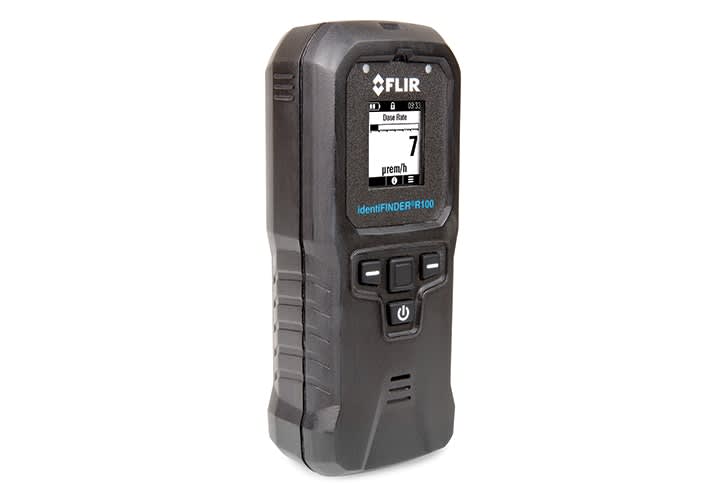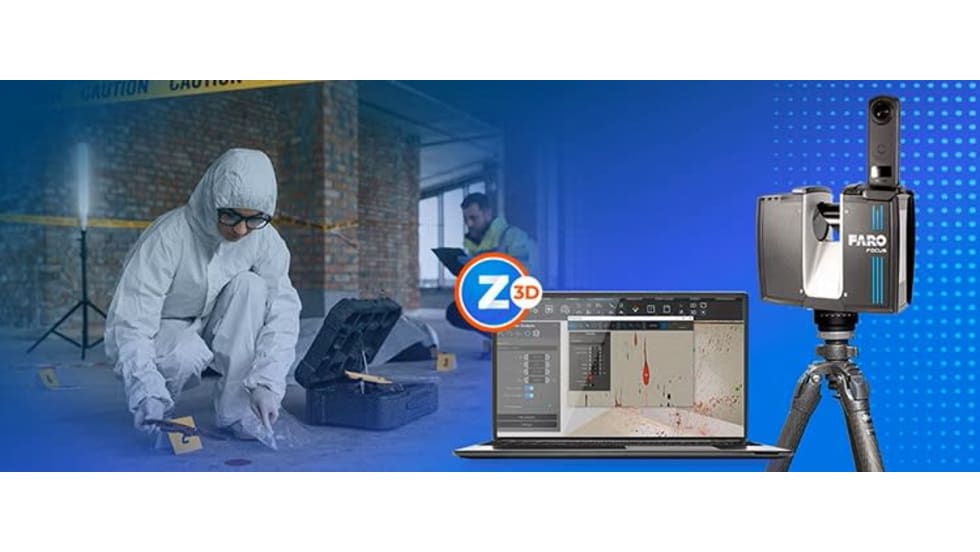The FLIR Detection division has an entire product line devoted to detecting radiation. The most complex and most sensitive to radiation is a premium-class RIID radio-isotope identification device (RIID) called the IdentiFinder R500 that can survey container ships or trucks and identify the specific types of radiation. But most law enforcement officers don't need that level of precision on the job. They just need something to tell them when and where a dangerous level of radiation exists. Which is the purpose of FLIR's IdentiFinder R100.
This new device is designed to be small, simple, and economical enough for officers to wear it daily in case it's needed. The IdentiFinder R100 is a personal radiation detector, or PRD. So it's designed for ease of use by an individual officer. The R100 is fully compliant with ANSI N42.33, the portable radiation detection standard for Homeland Security. You can wear it on your belt, mount it in a vehicle, and operate it one handed. Its long, narrow shape easily fits in a holster or the palm of the hand. "It will passively detect for radiation while officers are doing other tasks," says Dr. Nicie C. Murphy, FLIR Systems' radiation product manager. "It's something they don't have to think about unless a threat is present."













